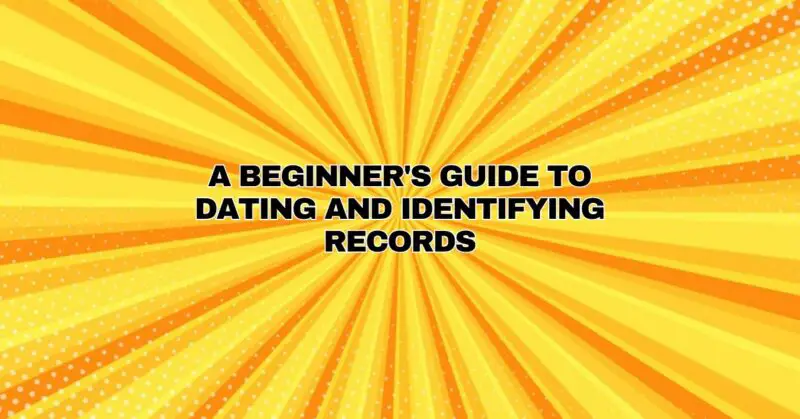Vinyl records have made a resurgence in recent years, attracting music enthusiasts and collectors alike. Whether you’re a seasoned collector or just starting, understanding how to date and identify vinyl records is crucial for building and maintaining a rewarding collection. In this beginner’s guide, we’ll explore the key aspects of dating and identifying vinyl records, helping you become a more informed and confident collector.
1. Understanding Record Label Information:
The record label, which is the paper or sticker on the center of the vinyl disc, contains essential information for dating and identifying records. Here’s what to look for:
- Catalog Number: This unique identifier helps you find information about the release, including the artist, album title, and format variations. Catalog numbers can change with different releases or reissues of the same album.
- Copyright Dates: Check for copyright dates on the record label or the album cover. These dates provide a general idea of when the album was released. Keep in mind that reissues may have different copyright dates.
- Matrix/Runout Numbers: These alphanumeric codes are etched into the vinyl’s runout groove area near the center label. They often contain information about the pressing plant, mastering engineer, and version of the record. Collectors use these numbers to differentiate between different releases of the same album.
2. Examining the Cover Art:
Album covers can offer valuable clues about the record’s release date and edition. Look for the following details:
- Album Art: The style of artwork and graphics can provide hints about the era in which the album was released. Artistic trends and design elements have changed over the decades.
- Barcodes: Modern barcodes on album covers were not widely used until the late 1970s and early 1980s. If you see a barcode, it’s a sign that the record is likely from that era or later.
- Typography and Font Styles: Pay attention to the typography and font styles used on the cover. Different time periods had distinct typography trends that can help with dating.
3. Analyzing Vinyl Color and Weight:
The color and weight of the vinyl itself can offer insights into the record’s age and quality:
- Vinyl Color: In the early days of vinyl records, black was the standard color. Colored vinyl, picture discs, and other variations became more common in the 1970s and beyond. The presence of colored vinyl doesn’t always mean a record is valuable, but it can help determine its era.
- Vinyl Weight: Standard vinyl records are typically around 140 to 160 grams. Heavier records, often 180 grams or more, became more prevalent in the 1990s and 2000s. While heavier vinyl can indicate a newer pressing, it doesn’t necessarily correlate with audio quality.
4. Researching Release History:
To gain a deeper understanding of your vinyl record, research its release history. Online databases, music forums, and collector communities can be valuable resources for finding information about different pressings, variations, and release dates.
5. Seek Expert Advice:
If you’re unsure about the authenticity or rarity of a record, consider seeking advice from experienced collectors, record store owners, or vinyl enthusiast communities. They can often provide valuable insights and help you identify valuable finds.
6. Beware of Reissues and Bootlegs:
In the world of vinyl collecting, reissues and bootlegs are common. Reissues are legitimate re-releases of an album by the original record label or a licensed distributor. Bootlegs, on the other hand, are unauthorized copies of albums. It’s essential to be aware of the differences and research the authenticity of a record before purchasing.
7. Keep a Record of Your Collection:
Maintaining a catalog or database of your vinyl collection is crucial for tracking your records’ details, such as release dates, pressing information, and conditions. This makes it easier to organize and identify your records in the future.
Conclusion: The Joy of Collecting Vinyl Records
Collecting vinyl records is a rewarding hobby that connects music enthusiasts with the history and artistry of music. By mastering the art of dating and identifying records, you can build a collection that reflects your musical interests and brings joy for years to come. Remember that collecting vinyl is not just about finding valuable or rare records; it’s about the thrill of discovery, the tactile experience of vinyl, and the appreciation of music in its purest analog form.

